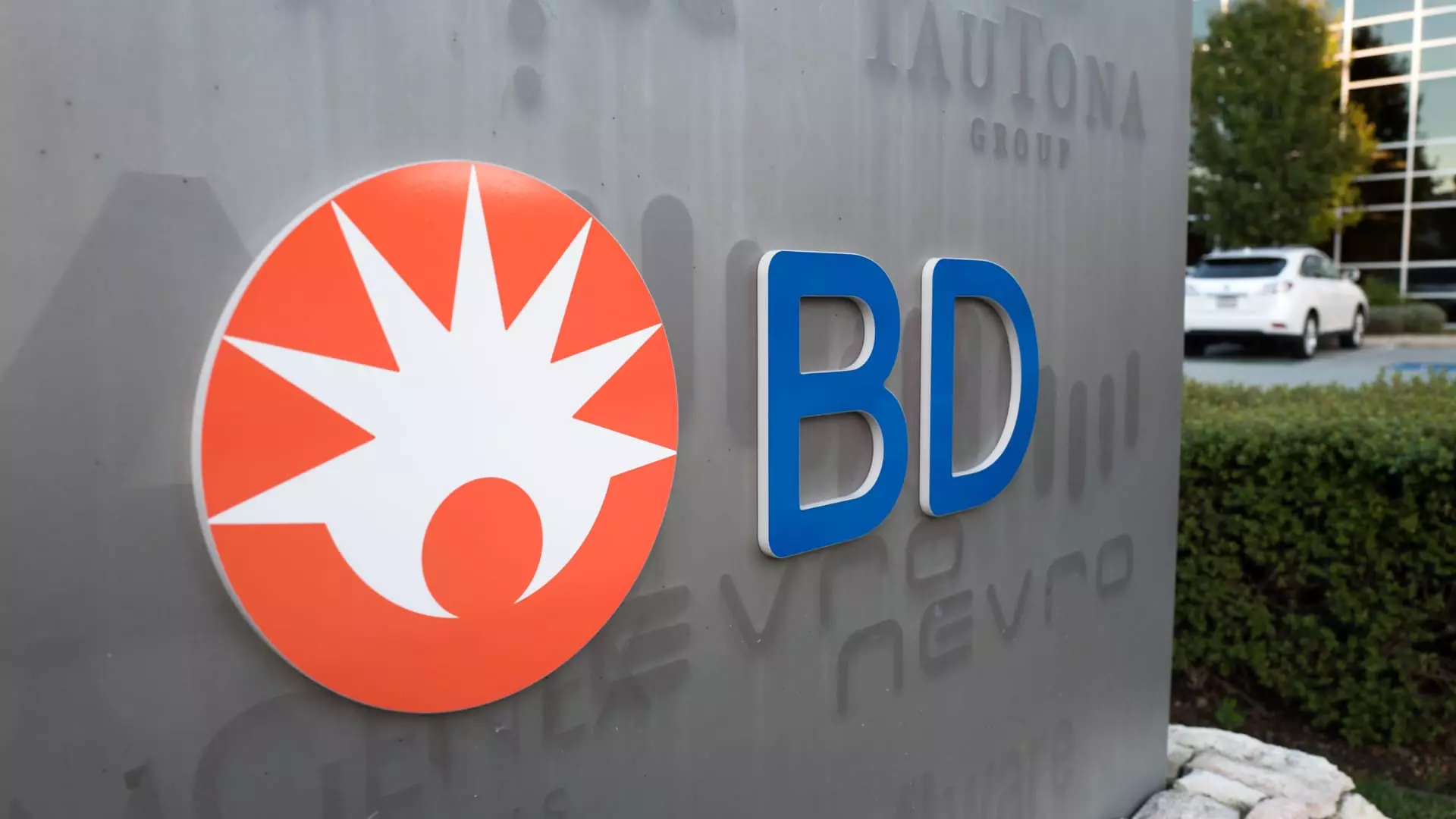Becton Dickinson (BDX) has established itself as a pivotal player in the global medical technology sector, supplying a diverse array of products that range from medical supplies to sophisticated laboratory equipment. This company’s vast network reaches healthcare institutions, physicians, and life science researchers across the globe. Furthermore, with an impressive market capitalization hovering around $66.65 billion and shares valued at approximately $229.85, BDX not only reflects a sound investment opportunity but also faces growing pressure to optimize its operational framework.
The Push for Strategic Realignment
Recently, Starboard Value, an activist investment firm renowned for enhancing operational efficiency, has turned its attention to BDX. With a commendable track record showcasing a 32.96% return across 57 campaigns, Starboard’s strategic insights into the healthcare sector could facilitate significant value creation for BDX. Their advocacy for the separation of BDX’s life sciences division stems from an evaluation of the inherent discrepancies between its two business units: MedTech and Life Sciences.
The MedTech segment, encompassing pivotal offerings such as medication delivery solutions and advanced monitoring systems, generates significant revenue while benefiting from robust growth rates. Contrasting this, the Life Sciences division, focused on diagnostic specimen collection and related products, operates in a relatively stable, albeit slower-growing, environment. In a market landscape characterized by varying growth trends and valuation multiples, the rationale for keeping these distinct business arms united under one corporate umbrella has become questionable.
Disparate Growth and Valuation Dynamics
An analysis reveals that MedTech currently delivers exceptional performance with $15.1 billion in revenue and $6.7 billion in EBITDA, placing it as the focus of investor interest and valuation potential. This division is fueled by the rising popularity of GLP-1 medications, enabling BDX to assert dominance in markets like infusion pumps and prefilled syringes. Conversely, the Life Sciences business contributes significantly less—recording $5.2 billion in revenue and $2 billion in EBITDA—yet benefits from a higher valuation multiple, reflective of its relatively stable earnings potential.
This divergence presents a compelling case for reevaluation. While MedTech’s faster growth could mean a valuation ranging from 13 to 14 times EBITDA, Life Sciences may attract multiples in excess of 20 times EBITDA. The existing consolidation of these segments under BDX’s banner results in a market valuation that negatively impacts the more lucrative MedTech division. Starboard’s proposal to decouple these segments aligns with the fundamentals of efficient asset management—a method that could not only better position each unit for success but also enhance total shareholder value considerably.
The implications of separating these businesses extend beyond just immediate valuation improvements. Enabling targeted management for each division can foster a more focused and dynamic operational strategy, which can lead to enhanced resource allocation and potentially improve margins as each unit aligns its strategies with its respective market realities. For BDX, this separation might streamline acquisitions, allowing for integrations that have previously been overlooked due to the wide-ranging nature of the corporation.
Furthermore, as capital markets evolve, having two distinct entities can broaden the appeal to different investor bases. This strategic separation not only improves operational agility but also allows the firms to draw in dedicated investors who align with their unique growth profiles and risk tolerances.
While pessimists may argue that the approval for separation is no guarantee of success, recent announcements from BDX indicate an openness to Starboard’s recommendations. The market has responded positively, reflecting confidence in the firm’s strategy. Company leadership must recognize the significance of Starboard’s actions and consider the fact that it has become common practice in the industry for activist investors to advocate for such changes.
Overall, Becton Dickinson stands at a transformative juncture. The choice to separate MedTech from Life Sciences could catalyze profound enhancements in both valuation and operational efficiency. As BDX evaluates and adapts its corporate structure, the path toward strategic clarity will likely forge a new narrative for the company, positioning it effectively for future growth amidst an increasingly competitive landscape.
The case for Becton Dickinson’s business separation is compelling. With potential valuation uplifts and operational benefits standing at the forefront of this discussion, it is imperative that BDX’s leadership embraces this strategic recommendation. As Starboard’s activism echoes within the hallways of BDX, the firm must act decisively, paving the way for a new chapter that prioritizes shareholder value and operational success across its business divisions. The forthcoming decisions will ultimately determine BDX’s trajectory in the ever-evolving healthcare landscape.

